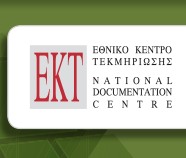3.5 Scientific collaboration
During 1996-2010, all institution categories showed increasing trends in the levels of international and national collaboration.
Notably, up to 2008, there was a considerable growth in the collaborations across national institutions. This can be partly explained by an increase in funding from the national research consortia within national Structural Funds Programmes. For example, the publications being a result of national collaboration* had risen from 833 in 1996 to 3,396 in 2010 for "Universities", from 299 to 869 for "Research Centres supervised by GSRT" and from 40 to 445 for "Technological Educational Institutes" (Figure 3.5.1).
The majority of publications with national collaboration included Universities as partners (Figure 3.5.2). Universities exhibited strong collaborative links with "Research Centres supervised by GSRT" and "Public Health Institutions".
The growth rate of Greek publication activity produced with international collaboration was slightly lower than the growth rate of publications produced as a result of national collaboration. More specifically, the number of international publications had risen from 1,113 in 1996 to 3,348 in 2010 for "Universities", from 355 in 1996 to 842 in 2010 in "Research Centres supervised by GSRT" and from 26 in 1996 to 141 in 2010 for "Technological Educational Institutes" (Figure 3.5.3).
The level and the type of collaboration –national or international- varied significantly within Institution Categories (Figure 3.5.4). "Universities" had the highest share of publications without collaboration*, which was equal to 37.9% during the 5-year period 2006-2010. "GSRT Research Centres" had the highest share of publications with international collaborations* (54% during the 5-year period 2006-2010). Finally, "Private Health institutions" had the highest share of publications with national collaborations* (73.5% during the 5-year period 2006-2010).



















